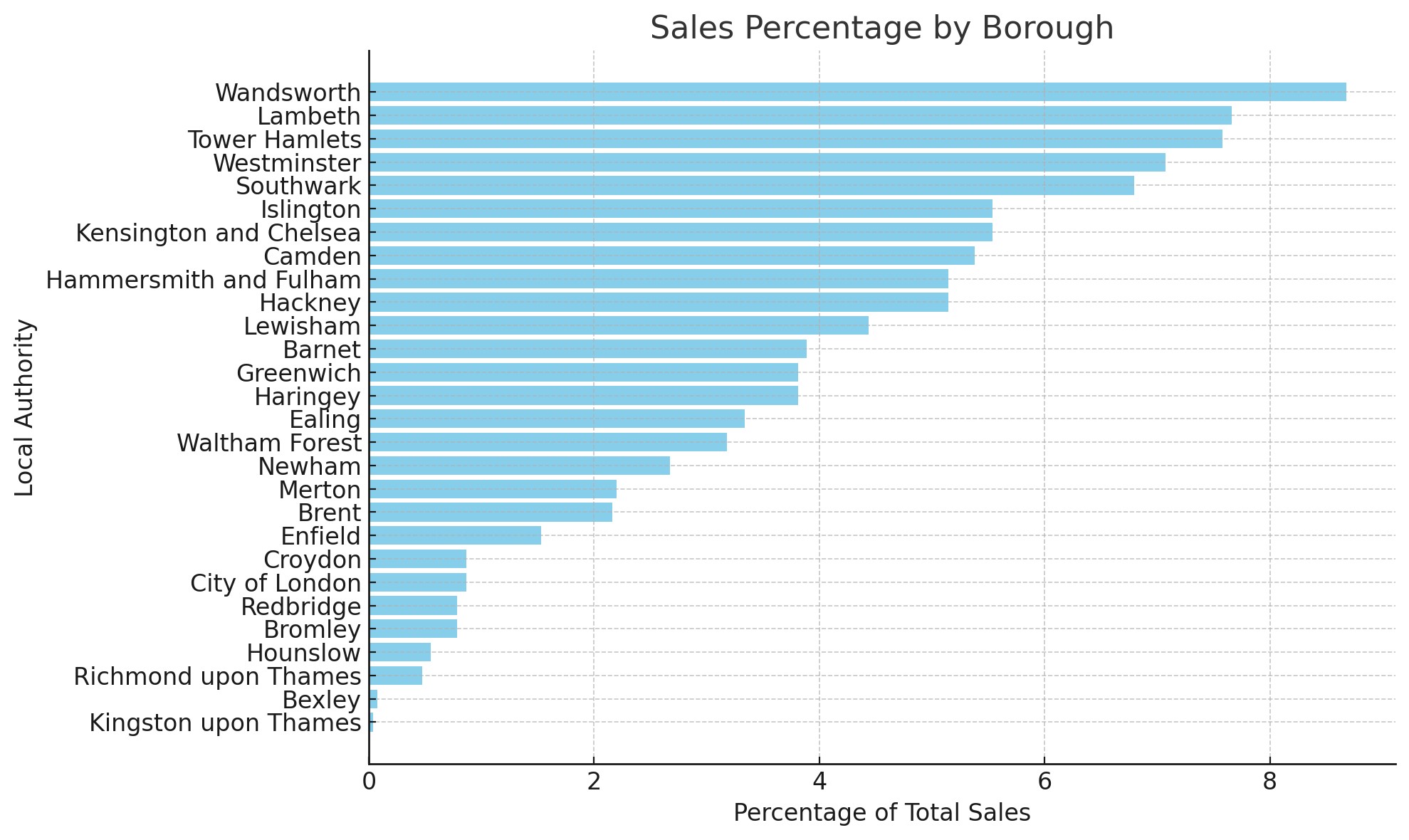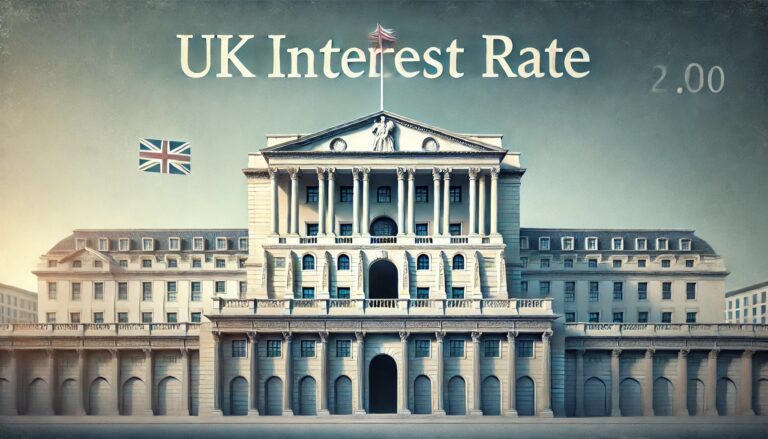The London property market is a dynamic landscape, characterized by its diversity in pricing, location preferences, and market participants. Recently, an analysis of property resale data from the past three months has provided a closer look at current trends, revealing where the market is most active and shedding light on the types of properties that are changing hands. Our data analysis of London property sales trends over last 3 months are as follows
1. High Sales Volumes in Certain Boroughs
The data indicates a strong concentration of property sales in a few key London boroughs. Wandsworth leads the charge, followed by Lambeth and Tower Hamlets, each contributing significantly to the overall market activity. These areas are historically popular among buyers due to their balance of proximity to central London, vibrant communities, and a mix of residential and commercial amenities.
Interestingly, boroughs like City of London, Bexley, and Kingston upon Thames show significantly lower sales volumes. This could be due to a variety of factors, such as limited housing stock, higher property prices that limit the buyer pool, or simply less movement in these areas during the observed period.
2. Market Segmentation by Price: London property sales market trends
One of the most telling aspects of the data is the distribution of sales across different price bands. The majority of transactions (approximately 62%) fall within the £0 – £550,000 price range. This suggests that more affordable properties are in high demand, which could be driven by first-time buyers, investors seeking rental properties, or those downsizing.
The data also shows a sharp decline in sales volume as property prices increase. The £550,001 – £800,000 range sees moderate activity, but beyond £800,000, sales drop off significantly. This trend likely reflects the challenges of affordability in London, where even modest properties can command high prices, making it difficult for many buyers to move into the higher price brackets.
3. Potential Indicators of Landlord Activity
The focus on lower price bands raises an interesting question: Could this data indicate that landlords are exiting the market? While the dataset doesn’t explicitly differentiate between properties sold by landlords versus owner-occupiers, the concentration of sales in lower price ranges could suggest a trend where landlords are offloading less profitable or smaller properties. This might be in response to recent regulatory changes, increased taxation, or a shift in the rental market dynamics that make renting out properties less attractive.
4. Heatmap Insights: Sales Distribution Across Boroughs and Price Bands
A heatmap analysis of the data provides a visual representation of where sales are most concentrated across different boroughs and price bands. The heatmap reveals further London property sales market trends
- Boroughs like Wandsworth and Lambeth are not only active overall but also have significant sales volumes across a range of lower to mid-tier price bands.
- High-value transactions (above £800,000) are more sparse and concentrated in fewer boroughs, such as Kensington and Chelsea and Westminster, areas known for their luxury property markets.
This visualization underscores the diversity of the London property market, where different areas cater to distinct buyer segments, ranging from more affordable housing options to high-end luxury properties.
5. What Does This Mean for Buyers and Sellers?
For buyers, particularly those in the market for more affordable homes, the competition is likely to be fierce, especially in the more active boroughs like Wandsworth and Lambeth. Conversely, sellers with properties in the higher price bands may need to adjust expectations or be prepared for longer selling periods, as the data suggests that demand in this segment is weaker.
Conclusion: London property sales market trends
London property sales market trends paints a picture of a market that is both vibrant and varied. The high activity in certain boroughs and lower price bands suggests that affordability remains a key driver, while the lower volume of high-value transactions could indicate a cooling off in the luxury segment. Whether these trends are a sign of landlords exiting the market or simply a reflection of current economic conditions, they provide valuable insights for anyone looking to navigate the London property market.
As always, the London property market remains complex, and while London property sales market trends & data like this provides useful indicators, it’s important for buyers, sellers, and investors to consider broader economic trends, regulatory changes, and local factors when making decisions. Reach out to us on +65 84688303 should you wish to have a coffee or chat to discuss your London Investment or follow our blog page for further insights.








